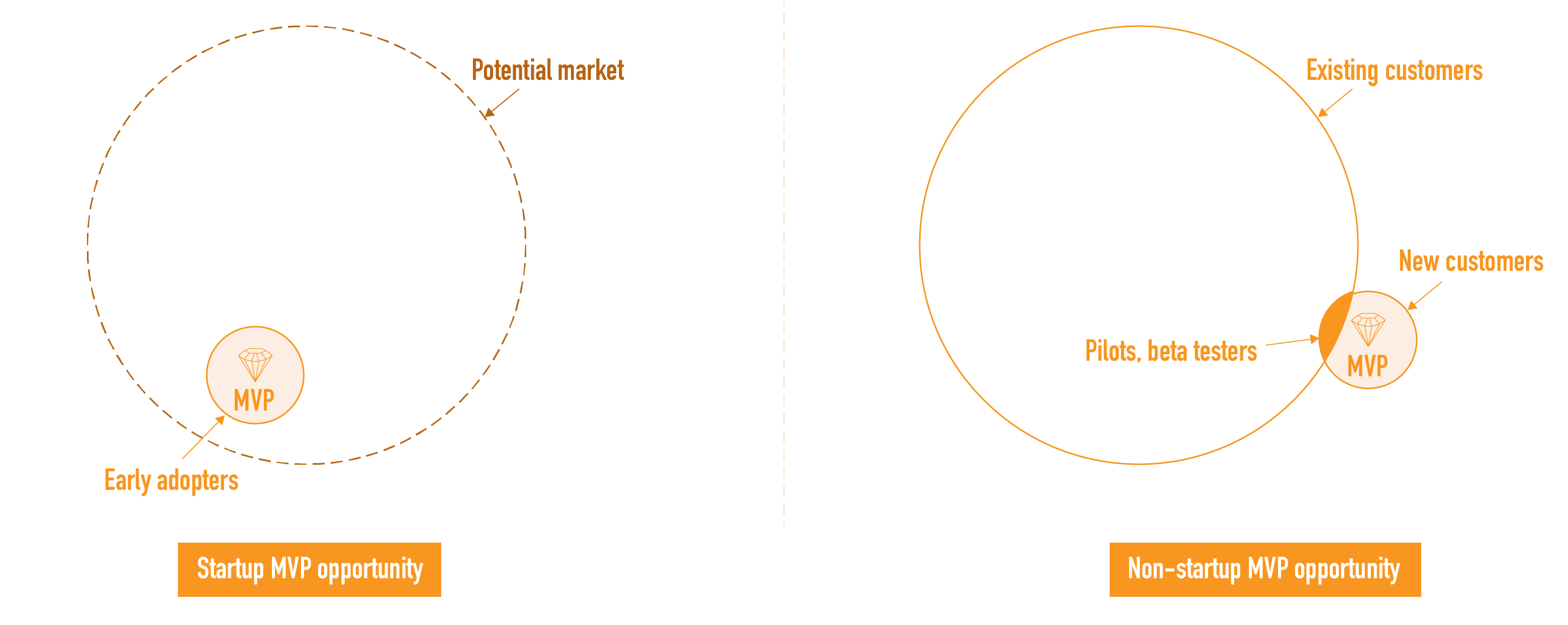MVP myths and the one question you should ask
What is a Minimum Viable Product
Actually it depends who you’re talking to.
Wikipedia
A product with just enough features to satisfy early customers, and to provide feedback for future product development.
Eric Ries (The Lean Startup)
A Minimum Viable Product is that version of a new product which allows a team to collect the maximum amount of validated learning about customers with the least effort.
Marty Cagan (Inspired)
The MVP should be a prototype, not a product.
Jeff Gothelf (Lean UX)
The smallest thing you can do to validate the validity of each of your hypothesis statements.
Ash Maurya (Scaling Lean)
A Minimum Viable Product is the smallest thing you can build that delivers customer value (and as a bonus captures some of that value back).
Many people I talk to
A half-baked product that customers don’t want, or worse, will mock.
Interestingly, some of those definitions are in complete contradiction.
So what is it? Anything? Not necessarily a product? A prototype? An experiment to validate a hypothesis?
The key may not actually be in the definition, but in the value of an MVP. Let’s unpack that:
I. A product is… a product.
A landing page advertising a product, though useful for testing an idea, is usually not a version or a slice of that product. Nor is a clickable prototype.
A product is a good that serves a need or satisfies a want.
II. The aim of the MVP is for the team to learn fast. That’s why it can rarely compete with existing products, as its potential lack of breadth will generally impact its desirability.
Learning fast also infers it is supposed to be revised!
What point is there in learning if we don’t revisit the product in the light of the learnings?
III. V is for viable. It means it has to be working and meet the essential quality of a product: Being used by people. Besides, you cannot arbitrarily decide if the product is viable. It is viable if it presents both a business and user value, and users will be the judges of the latter.
IV. The next question we should ask: Product Managers are not only faced with the challenge of what and when to release, but also who the MVP should target. There is no point blaming the concept of an MVP if it is released too early, too late or to the wrong audience.
It’s not all about the what and when. A crucial question when rolling out and MVP is who for?
Let me give you an example.
The right audience — a case study
A B2B software company was developing a cloud product as the new generation of a feature-rich desktop application. With a very high-profile, demanding user base, they could simply not settle for less than a very rich product for several reasons.
One of them and certainly not the least was that when a tool is upgraded, users don’t expect less out of it, but probably more.
Rather than wait for a finished product, my friend Myles Morson and his team identified a key market segment outside the current user base. For these users, the product would a huge step forward, given they were using excel spreadsheets to run their businesses.
In proper MVP fashion, the team were able to collect feedback while cruising towards a broader release.
One crucial question you need to ask yourself when releasing and MVP is who: What audience are you targeting?
MVP47???
I am not sure what MVP1, MVP2, MVP3 is supposed to mean…
Like the shortest distance between two points, there can only be one minimum viable product!
Any point after that is an increment of the product, and the notion of minimum is consumed.
Here is a graphic summarising a typical approach. Keep in mind both the discovery and delivery are iterative.

As you learn from market feedback and your product grows, you can release to wider audiences.
Startup vs non-startup MVP approach
There is a fundamental difference in how a startup and a non-startup might approach MVPs.
As a startup journeys on a quest for Product-Market Fit, they will study the market, identify the customer needs and find a niche to focus on. The MVP will be aimed at these early adopters.
For businesses with an existing customer base, the key to a new MVP is to think outside the box and identify either/or:
- Beta testers inside the base — Champions that know what they are in for.
- A niche outside of your existing customer base.

The MVP recipe
Ingredients:
- Outcome-focused culture.
- Empowered cross-functional team (design, tech, business) given problems to solve, not solutions to implement.
- Direct feedback loop from users.
How to:
- Test your hypotheses with rapid and cheap experiments (usually without code) while iterating on your value proposition.
- With validated hypotheses, start building your product by focusing on the highest value first. Each increment should be releasable .
- Find the tipping point: Which customer segment, inside or outside your business, will be delighted or simply beta-prepared to use your product so that you can learn from their experience. Like Reid Hoffman — the founder of Linkedin says, if you’re not embarrassed by the first release of your product, you’ve probably launched too late.
- Release to the agreed segment, measure, learn, and apply those learnings into the product. If not there is really no point in measuring or learning! (*note: unfortunately the business pressure to just move along can be extremely high).
- Enjoy a growing product on a growing customer base — best served hot.

Comments
Comments are disabled for this post